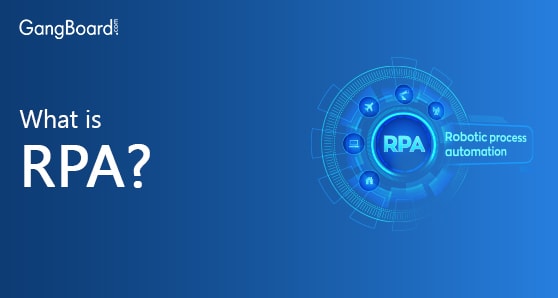
What is RPA?
What is Robotic Process Automation?
Robotic Process Automation (RPA) is a term that refers to the software that is a fusion of Artificial Intelligence (AI) and Machine Learning that can solve complex and repeatable task which was once carried out by human beings. These tasks can be categorized into queries, calculations, statistical problems etc. RPA can be called as a software robot who acts like a programmer who logged into the system and does the work.
The RPA robots use user interfaces and interact with other systems too. They use trigger responses to communicate and take zero hours to rest which in turn increases the performance and costs less than a human worker. The chances of making mistakes are negligible and hence all organizations are switching their mode of working to these types of bots. In every website, we can see the chatbots that can help the visitors. Here the robots are going through the queries and using the semantics they are giving the exact answer. Rather than syntax, these kinds of bots use semantics as they are babies of Artificial Intelligence.
Although these bots are used in companies, they are not used as a replacement for the human. They will perform;
- Monotonous tasks. These works include data entry and other repetitive works which don’t need creativity and decision making. When bots take care of these tasks, human employees can take more effort in works that need more genius power.
- It ensures that the output is exactly the same and what we need.
- It helps the tasks to finish quickly since the bots can collect the necessary data as soon as possible from the databases.
Evolution of RPA
The solid proof for the evolution of RPA is available from 2000 onwards, but it was under consideration many years back. The major three technologies that led way to the creation of RPA are:
- Screen Scraping
- Workflow automation
- Artificial Intelligence
Screen scraping can be defined as the process of collecting all factors that affect the user interface. It, in fact, creates methodologies to improve the total display. Only the advantages of workflow automation are taken into consideration which includes the elimination of manual data entry which in turn increases the performance and reduces the execution time. And here comes the AI, which we all know that it is the capability of a system to perform tasks that are normally carried out by human beings.
Differentiating RPA from other Automation tools
RPA will take half the time that is required by conventional automation tools. RPA won’t create any changes to the underlying systems and hence anyone can start using it at any time. For the business firms that are continuously changing, RPA will be the right choice, since it can be adapted easily to any environment. The investment is very low because there is no need for any maintenance. The customer service is very high and the rate of error will be completely zero. The repetitive tasks will be done by RPA, which allows the other employees to put their efforts into more productive tasks.
The working path of Robotic Process Automation
These bots have got the capability to mimic the actual users. At first, they will log into the application that they are meant for. Then they will connect to system API and starts copying and pasting the data. They will move files, make queries in databases, will check the emails etc. They will also take data from the websites that are needed for various tasks. Calculations in every sector can be done by these robots without any time delay.
Business Benefits of RPA
The major part of RPA is robots or bots. When the business firms started using the same, they are making the easiest way to achieve their goals easily. They will be acting as the high-efficiency employees who don’t need any push from the higher officer level. The processes handled by the RPA will be completed in expedition speed with an increase in scalability and flexibility. During the training period, it will take less time than human employees and hence they will start working easily. The business firm can create its daily report easily and changes in every task can be seen daily.


 +1 201-949-7520
+1 201-949-7520 +91-9707 240 250
+91-9707 240 250